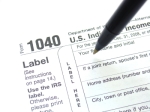 When faced with the decision of when to claim social security, it is important to consider all factors carefully as choosing the right Social Security election may be the most important decision of your retirement.
When faced with the decision of when to claim social security, it is important to consider all factors carefully as choosing the right Social Security election may be the most important decision of your retirement.
How much you receive in Social Security benefits depends on three main factors:
1. Your earnings record
2. When you elect
3. How long you expect to live
Since you can’t go back and change your earnings record, and you have minimal control over how long you live, calculating an expected lifetime benefit largely hinges on when and how you elect benefits.
In theory, if you elect early, you will get a smaller benefit for a longer period of time. If you elect later, you will get a larger benefit for a shorter period of time. Single people can do a simple “break-even” analysis to determine whether to take early or wait. But for married couples, the decision is much more complex.
One decision can impact your retirement by tens of thousands of dollars.
For married couples, a simple breakeven analysis will usually give the wrong answer, costing you benefit dollars.
Why? Because Social Security offers three distinct benefits for married people:
1. Retired Worker Benefit – Based on you own earnings record
2. Spousal Benefit – Provides your spouse with a benefit once you claim your own benefit
3. Survivor Benefit – Provides your spouse with a benefit after your death
Virtually all of the simple break-even calculators in use today ignore the Spousal and Survivor benefits. Complex planning software includes spousal and survivor benefits but only for one combination of election ages. In short, neither tool offers a thorough analysis.
A study from the Boston University determined that 73.7% of seniors make mistakes when claiming Social Security.
You may be asking yourself what is at stake. The answer is that the difference between the worst and possibly best time to claim Social Security benefits may be well over $100,000! Since at the Baron Group, I help many senior citizens decide when the best time to claim Social Security is, I had to find a robust solution. By using comprehensive and individual analysis provided by the Social Security Timing* software, we are able to examine hundreds of possible combinations, including 81 possible age combinations across nine possible election strategies, and find the one option that offers the highest expected lifetime benefit.
Case Study: A 62-year-old couple with one above average earner (PIA $1,800) and a lesser earning spouse (PIA $1,000), who both live to average life expectancy could lose over $60,000 in family benefits by making the worst possible decision for when to take Social Security.
If they both elect at age 62, they could be losing over $50,000
If they both elect at age 66, this couple could still be leaving $30,000 on the table
Simply delaying benefits isn’t the answer either. If they both delay to 70, they could be losing over $40,000
The Switch Strategies™ Approach
Social Security offers three distinct types of benefits for retired workers and/or their spouses:
If you file prior to full retirement age, you are deemed to have filed for all benefits for which you are eligible. At full retirement age and beyond, you have several options to elect a limited benefit for a period of time, then convert to a larger benefit at some point in the future.
A recent study suggested that these options represent over $10 Billion in unclaimed Social Security benefits. For an individual family, it is not uncommon to receive an additional $20,000 to $40,000 or more in benefits.
The Switch Strategies™ approach takes advantage of two basic techniques: the “restricted application,” and the “file and suspend.” When you go to the Social Security office, the individual you meet with has been trained to help you identify the highest benefit you can get today, not necessarily over your lifetime, and definitely not over the joint lives of you and your spouse. As a result, you are unlikely to hear about these techniques during a typical visit.
Restricted Applications
Once you reach Normal Retirement Age, you have the option to restrict your application to exclude certain benefits. If a benefit is excluded, it will continue to build delayed retirement credits. As an example, a higher-earning spouse, who may want to wait until age 70 to collect his own benefit may be able to file at 66 for only the benefit available under his spouse’s work record, while still allowing his own benefit to build delayed retirement credits. At age 70, he would switch to his own benefit. Alternatively, a lower earning spouse could restrict his or her application to only spousal benefits while continuing to claim delayed credits on his or her own earnings record.
File and Suspend
The second technique is the ability to file and suspend. Spousal benefits are not available until the primary earner has filed for his or her own benefits. The Senior Citizens’ Freedom to Work Act of 2000 allows a worker to earn delayed retirement credits after filing for benefits if he requests that he not receive benefits during a given period. As a result, a higher-earning spouse can file for benefits, then immediately suspend the benefit, and continue to earn delayed credits. In the process, he will have made his spouse eligible for spousal benefits under his earnings record.
There are many possible combinations
It is important to note that Social Security benefits are completely gender-neutral. In other words, any technique that is available to the “primary earner” is also available to the “secondary earner.”
Certain combinations of the two techniques are also allowed. For example, the higher earner could file and suspend to make a spousal benefit available to the secondary earner, who could then file a restricted application for only spousal benefits. This would allow both earners to earn delayed retirement credits on their own earnings records while one spouse still collects benefits now.
The Solution
Family Benefits Analysis
Using software analysis, we examine hundreds of possible combinations, including 81 possible age combinations across nine possible election strategies and find the one option that offers the highest expected lifetime benefit.
We provide a summary of the best, worst and two common election strategies.
With your Family Benefit Analysis, you’ll receive a customized report including:
Projected Outcomes for Best/Worst/Common Election Choices
“Map” of expected outcomes for each election age combination
The Switch Strategies™ solution that could further optimize your Social Security income
Why Maximize Social Security?
For most people, Social Security is the only income stream that:
Is adjusted annually to keep up with inflation
Is tax-advantaged—at worst, it’s only 85% taxable as ordinary income
Will continue to pay you for as long as you live
Is backed by a government promise
If you need more information, please contact us and we will be happy to help you answer the important question when to claim Social Security.
*Social Security Timing™ is not connected with, affiliated with or endorsed by United States government or the Social Security Administration. The local advisor offering Social Security Timing™ may be an insurance agent, financial advisor, accountant or attorney. Advisors may offer other products or services and are compensated by commissions and/or fees for any other services they may provide.
Tags: breakeven analysis for social security, claim social security, file and suspend, social security benefits, switch strategies, The Baron Group, Tim Mobley, Timothy Mobley, when to claim social security








